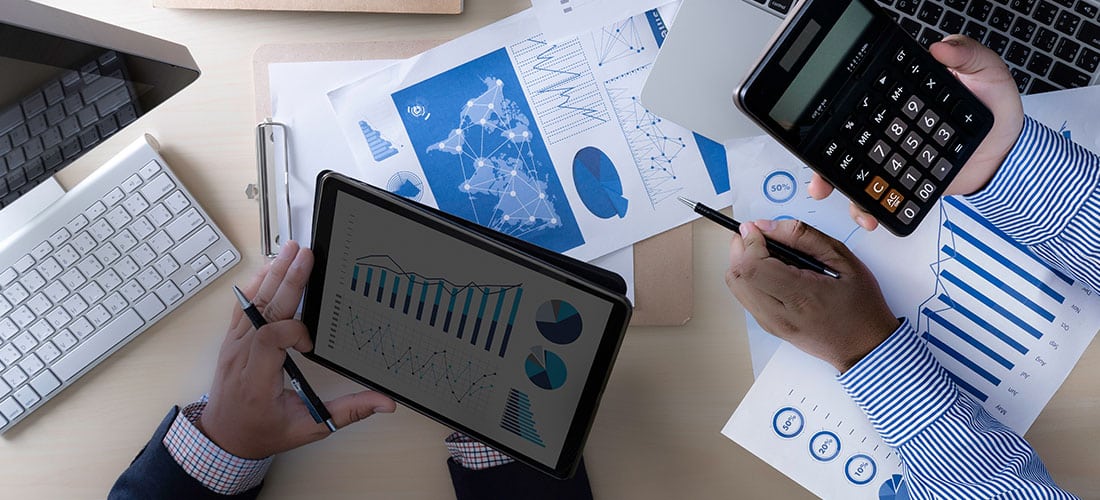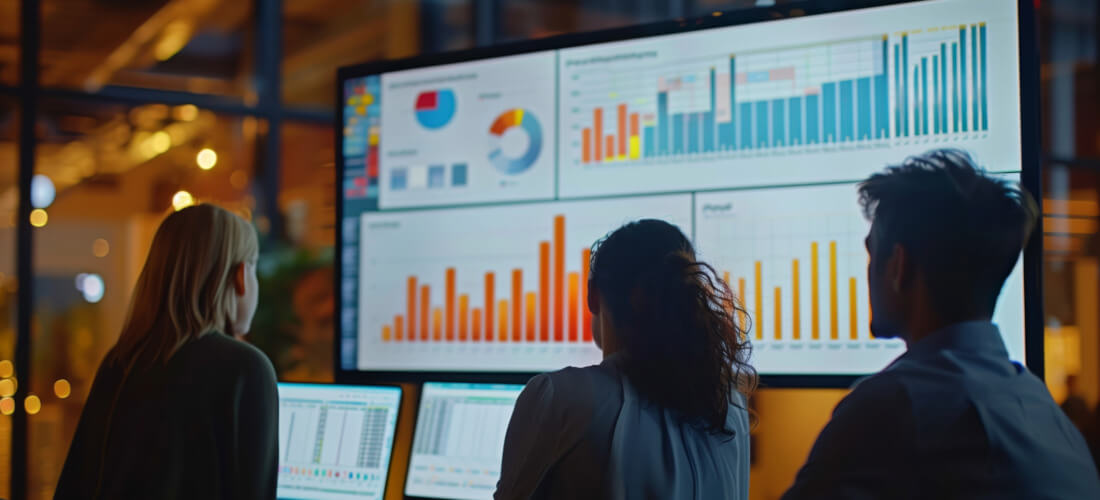
Advancements in Tax Collection Software
While older desktop systems relied heavily on paper-based processes, modern tax collection software comes equipped with features that simplify tax remittance for residents and streamline tax processing for agencies. Here are some ways modern tax systems have evolved from legacy systems:| Process | Legacy Tax Systems | Modern Tax Software |
| Data Entry | Data is keyed in manually; prone to errors | Automated data entry with OCR and/or AI technology |
| Data Storage | Uses on-site databases; limited storage capacity | Uses highly scalable cloud storage |
| Integration | Limited integration between systems | Seamless integration between departments |
| Filing and Payment | Paper-based filing and payment processing | User-friendly and online payment portals |
| Accessibility | Primarily on-premises access only | Remote access via web portals and mobile phones |
| Automation | Repetitive actions are mostly done manually | Advanced automation of basic and complex tasks |
| Reporting | Basic, pre-defined reports | Real-time reports and AI-driven custom reports |
| Security | Basic security measures; vulnerable to breaches | Enhanced security measures such as multi-factor authentication |
| Updates & Maintenance | Infrequent updates; manual upgrades required | Automatic updates and regular maintenance |
| Scalability | Difficult and costly | Simple and budget-based scaling with cloud infrastructure |
Benefits of Implementing Tax Collection Software
Increased Operational Efficiency
Modern tax collection software is platform agnostic, allowing it to be seamlessly hosted on cloud servers and integrate smoothly with other agency systems. This integration facilitates inter-departmental coordination on tax activities
Moreover, software automation handles many routine tasks, freeing up staff to concentrate on tasks demanding high-level human input.
Tax software also enhances access, leading to increased efficiency. Depending on employees’ system permissions (i.e., if they have remote access), staff can access the system from anywhere to read, add, edit, and process data.
Cost Efficiency
Traditional tax administration comes with significant demands in terms of time, money, and effort. It relies on hardware systems that are on-site, which can be expensive to acquire and maintain. Moreover, there’s the added expense of printing and physically storing records.
Migrating tax operations to a cloud-based system solves these challenges. With this approach, government agencies only utilize and pay for the services they need, eliminating many expensive, redundant systems. Furthermore, the burden of software updates is shifted to the provider.
Enhanced Revenue Collection
Implementing an end-to-end platform for managing tax collection can potentially enhance tax revenue for agencies. Tax collection software operates on a profile-based system, enabling agencies to input all taxable entities, define their tax obligations, and track their fulfillment.
This streamlined approach allows government agencies to easily find and follow up with non-compliant parties using the software’s built-in bulk notification systems.
Improved Taxpayer Experience
Software solutions can contribute to revenue growth and boost customer satisfaction by modernizing the way people pay taxes. Tax procedures often rank among the most frustrating government processes for residents. Contemporary solutions can make the process more convenient by offering the ability to file from a mobile phone, pay with a credit card, and keep track of everything in a personalized web portal. When governments offer user-friendly platforms for filing and paying taxes, it can significantly boost compliance rates among residents and businesses.
Better Data Management & Utilization
A fully digital tax collection system is the most foolproof way to minimize or eliminate data management issues.
At the point of origin, automatic data validation reduces the chances of erroneous information getting into the system. All data is then stored in a centralized database, allowing for improved data visibility and integrity.
However, the software does more than just store the data. Records get enriched with metadata and dynamic linking, enabling analysis to generate insights that guide tax regulatory decisions and enforcement strategies.
Enhanced Security
 Tax collection software is fortified with multiple layers of security to safeguard the integrity of the tax collection process.
Tax collection software is fortified with multiple layers of security to safeguard the integrity of the tax collection process.
Robust access control measures ensure that only authorized personnel can access taxpayer data. This includes features such as role-based access and stringent password requirements.
Sensitive taxpayer data is encrypted both in storage and during transmission to protect it from unauthorized access. Detailed logs are maintained within the software to track all changes made to taxpayer data. These trails aid in the detection of suspicious activity and provide accountability for actions taken during tax preparation.
Reputable tax collection software providers perform regular security updates to patch vulnerabilities and ensure compliance with industry-standard security frameworks like ISO 27001 and SOC 2.
Disaster preparedness is another critical aspect of cybersecurity. With cloud-based tax software, users can schedule regular backups or have a duplicate of the agency’s system ready. This ensures seamless continuity of services to taxpayers in the event of a security breach or system failure.
Increased Adaptability
Legacy tax systems are seldom flexible by nature, which makes adapting to the ever-changing nature of tax collection a real challenge. Implementing a new policy, for example, often becomes a prolonged process due to the disjointed structure of these systems.
With tax collection software, staff can update terms like rates and deductions in the backend for faster application. Furthermore, if there’s a sudden surge in data or a need for greater processing power, cloud-based tax software providers can scale up resources on a pay-as-you-go basis, ensuring adaptability in a cost-effective manner.
Impact on Government Operations
The adoption of tax collection software affects more than just tax operations; it has a broader impact on the collecting agency, the entire government, and even the public. Here are some ways a software-based tax system influences government operations.
- Reduced staffing costs: Software automates tax collection processes, resulting in faster processing times, improved accuracy, and a reduced wage bill due to lower staffing requirements.
- Better public services: Increased efficiency and accuracy of tax collection help governments maximize revenue and reduce administrative costs. The freed-up funds can be used to increase government service delivery.
- Easier compliance oversight: Tax software simplifies compliance and regulatory enforcement by increasing transparency in tax preparation, an area that has long been opaque for taxpayers.
- Data-based decision-making: Real-time data from tax collection software helps government agencies monitor tax and revenue trends and make timely decisions to improve outcomes.
- Enhanced system integrity: Tax collection software provides all-around visibility that reduces the occurrence of errors and fraudulent activities in the tax system.
Challenges & Considerations
When looking for the right tax software, it’s important to understand the challenges and considerations that come with implementing them.
- Change management: Government agencies must develop change management procedures to ensure software implementation is successful.
- Customization: Choose tax collection software that is customizable to the regulations and requirements of your jurisdiction.
- Training: Provide adequate training for staff to use the new tax software effectively.
- Cost: Evaluate providers, weighing the cost, including subscription fees and implementation expenses, against the value and services they offer.
- Data transfer: Develop a plan for data migration from legacy systems to the SaaS platform.
- Accessibility: Pick and design a system that provides accessibility for taxpayers living with disabilities.
- Integration: Choose tax software that can seamlessly integrate with existing technical environments and processes.
Future Trends in Tax Collection Technology
 Advancements in tax collection software are rapidly progressing and show no signs of slowing down.
Advancements in tax collection software are rapidly progressing and show no signs of slowing down.
AI and machine learning are likely to be key drivers of innovation in taxation technologies. For example, some AI algorithms can offer personalized tax advice using individual financial data and sift through records to spot delinquency or fraud patterns.
Machine learning (ML) models may also provide value by predicting tax revenues more accurately, helping governments better plan and allocate their resources.
All-In-One Tax & Compliance Solution
Tax automation is becoming a necessity for governments of all sizes. As populations grow and regulations evolve, the demand for efficient digital services is at an all-time high, and legacy systems simply cannot fulfill it.
The GovOS Tax & Compliance Suite offers comprehensive solutions that unify all tax procedures under one simple and efficient system, giving your agency complete control over tax management and compliance monitoring.
Ready to revolutionize your tax collection process? Take the first step by scheduling a free demo today.









